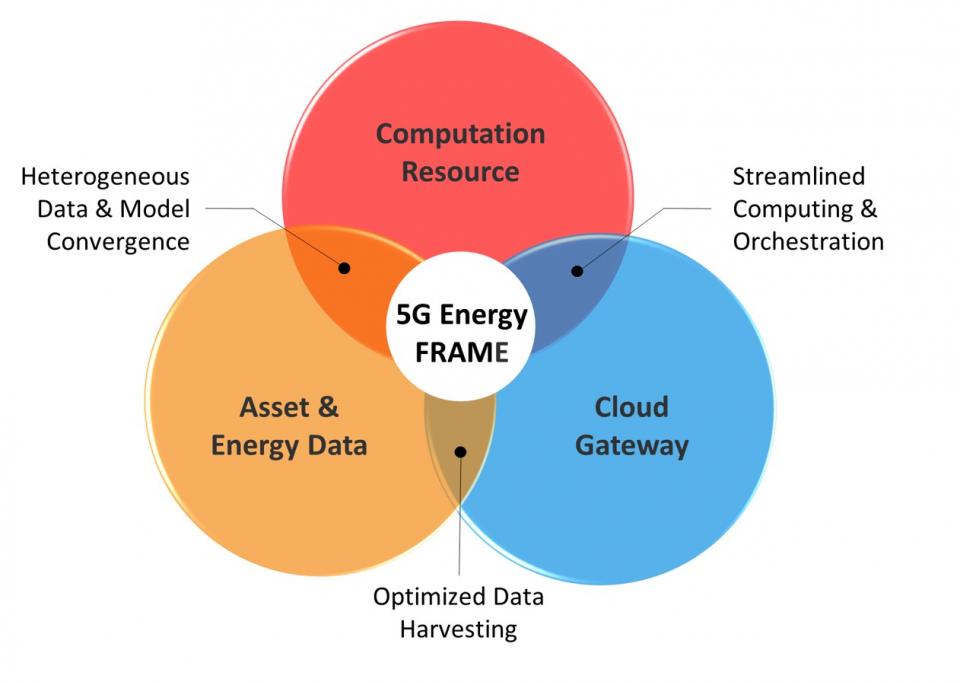5G Energy FRAME
5G Fabricated Resource and Asset Management Encompassment for Energy Infrastructure

Lab-Level Communications Priority Topics
Grid
5G Fabricated Resource and Asset Management Encompassment for Energy Infrastructure

In August 2021, PNNL was awarded one research and development project called 5G Energy FRAME. The project is part of Department of Energy’s Office of Science Advanced Research Computing program to advance 5G wireless networking for science applications. The awarded PNNL project will support high-risk, high-reward research aimed at reinventing the digital continuum, or the connections linking sensors, detectors, and more at the wireless edge to advanced high-performance computing and data centers. With the proposed 5G Energy FRAME, the project aims to assist U.S. energy infrastructure under the transformational clean energy vision. The vision will provide prosumers with the best available technologies to deliver affordable, reliable, and sustainable energy service, and will support grid operators and field crews under extreme environments across urban and rural communities in all U.S. states and territories.

In this project, the team will firstly develop a simulation based quantitative method to evaluate the performance of 5G enabled Heterogeneous DERs Data & Model Convergence [Task 1], edge sensing, computing, and streaming capabilities will be investigated to supports rapid prediction of DER resource availability and asset health management based on cross-domain intelligent sensors. Moreover, a cloud-based platform for optimized energy data harvesting [Task 2] will be designed and implemented on top of 5G network fabric, which collects the extracted intelligence from the grid edge streaming analytics and the data reduction process at edge-based energy zone, along with the latest data and models from the large scale transmission and distribution co-simulations. Lastly, a streamlined computing & orchestration workflow for resilient energy service [Task 3] can be integrated into the aforementioned cloud-based platform in Task 2, which serves as a secure public gateway for participating energy stakeholders to access advanced computing resources and machine learning (ML) solutions. Computing resources from edge devices to participating world-class supercomputers will be orchestrated and maintained to maximize the benefits of multitude computing resources for energy service while optimizing data movement within the digital continuum.
The ultimate goal of 5G Energy FRAME (Fabricated Resource and Asset Management Encompassment) is to explore and validate the proposed methodology that builds a better grid during clean energy transition, and also identifies a generic co-design of scientific domain target (energy service), 5G communication fabric (connecting a multitude of sensors distributed in large geospatial span and various temporal characteristics), and heterogeneous computing resources and orchestration (grid edge, edge-based zone, regional and interconnection) in complex distributed engineering systems. As a result, the energy domain use case materializes this generic scientific co-design methodology and delivers the core value proposition to potential stakeholders. This project’s energy domain use case will focus on resilient grid operation and planning by simulation-based co-design of transmission, distribution, and communication networks. Potential stakeholders include grid operators, prosumers, researchers, solution providers, regulators, and more.
